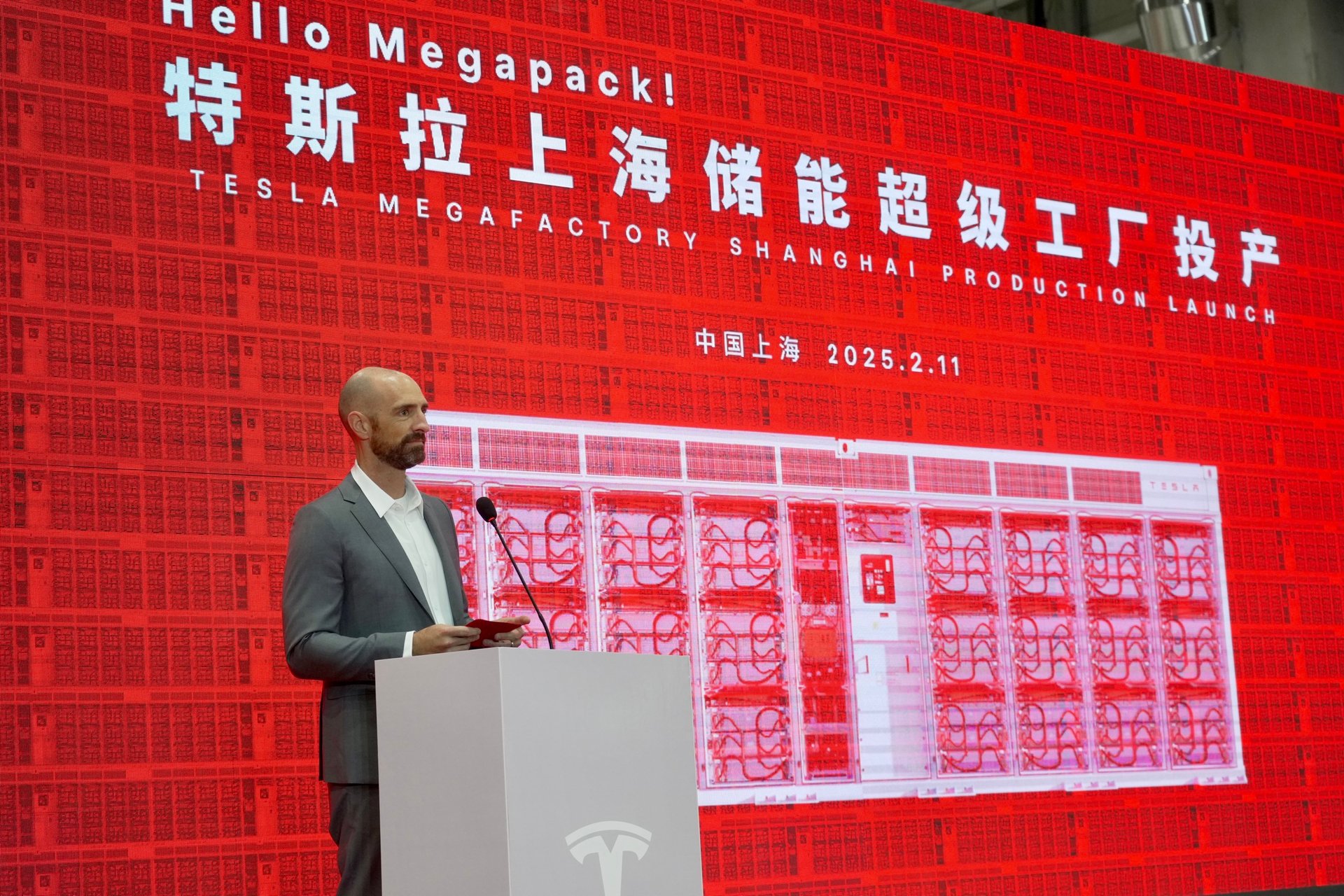Tesla inks a deal with China to build its first grid-scale battery power plant
Amid a tense U.S.-China relationship, Tesla has agreed to a $557 million deal for a project that will reportedly be the largest of its kind

Zhang Hengwei/China News Service/VCG via Getty Images
While the rest of the world focuses on Tesla’s robotaxis and Cybertrucks, Elon Musk is quietly building a power play — literally.
Suggested Reading
On Thursday, Tesla signed a roughly $557 million agreement with the Shanghai government to build its first large-scale energy storage station in China, marking a significant expansion of the company’s growing energy business. The facility will deploy Tesla’s Megapack batteries — giant lithium-ion units the size of shipping containers — to help stabilize China’s increasingly renewable-heavy power grid. Tesla said on Chinese social media service Weibo that the site will be the largest of its kind in China when it’s up and running.
Related Content
The announcement isn’t just a regional milestone. The deal could be a glimpse into Tesla’s long-term future as an energy infrastructure company, not just an automaker.
The battery storage station will be co-located with Tesla’s Megafactory in Shanghai’s Lingang district, which began mass production of Megapacks earlier this year. Once complete, the facility will offer industrial-scale backup power to local energy providers — effectively acting like a giant battery bank that can charge during periods of low demand and discharge when the grid is under strain.
Each Megapack is capable of delivering up to one megawatt of power for four hours, enough to power hundreds of homes during peak demand. In bulk, they form the backbone of Tesla’s utility-scale energy solutions, which are already deployed in places such as California, Australia, and the U.K. But this Shanghai facility signals a major leap: integrating Megapacks directly into the fabric of one of the world’s largest power grids.
On Chinese social media platform Weibo, Tesla described the grid-side energy storage station as a “smart regulator” for urban electricity, capable of flexibly adjusting grid resources in real time to meet shifting demand — a particularly valuable asset as cities scale up intermittent power sources such as solar and wind. While the translation came via Google, the message was clear: Tesla isn’t just selling batteries; it’s positioning itself as an infrastructure player, helping future-proof megacities with intelligent energy systems.
This role — as a kind of software-defined shock absorber for the grid — could become Tesla’s most durable advantage in global energy markets. And in China, where grid modernization is both a national priority and a policy-supported opportunity, it gives Musk’s company a powerful foothold. The Shanghai battery power plant would “effectively solve the pressure of urban power supply and ensure the safe, stable, and efficient electricity demand of the city,” the company said.
The deal couldn’t come at a better time for China. The country is doubling down on wind and solar power, but these sources are inherently intermittent. Energy storage — particularly grid-scale — is increasingly critical to ensuring stable power delivery across sprawling provinces.
In Tesla’s first-quarter 2025 earnings report, the company said its energy storage deployments soared to 10.4 GWh, more than doubling year-over-year and setting a company record. Energy revenue jumped 67% to $2.73 billion, while gross profit hit an all-time high — making the energy division one of the few bright spots in an otherwise rocky quarter. The energy unit continues to outpace Tesla’s automotive business in margin performance, fueling some speculation that the company’s future may lie less on wheels and more on the grid.
During Tesla’s fiscal 2025 first-quarter earnings call, Musk said that “the energy business is doing very well,” adding that its growth would be long-term and substantial — expecting it to “eventually deploy terawatts of capacity per year.” In 2024, Musk said the energy storage business could someday outsize the car business: “It will increase — we actually know that it will — significantly faster than the car business, as we expected,” he said.
That may no longer be hypothetical.
The Shanghai deal isn’t just about deploying batteries. It’s about Tesla embedding itself deeper into the energy grid of the world’s largest clean power market. It also sets a precedent for similar infrastructure partnerships in Europe and the U.S., where grid modernization is also top of mind.
While Wall Street continues to watch Tesla’s vehicle deliveries and AI ambitions, the company’s batteries may be what keeps the lights on — both literally and figuratively.
